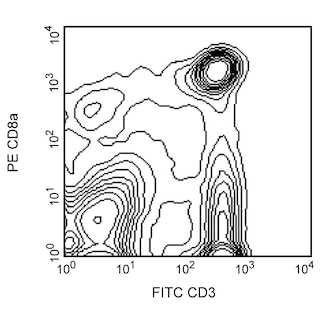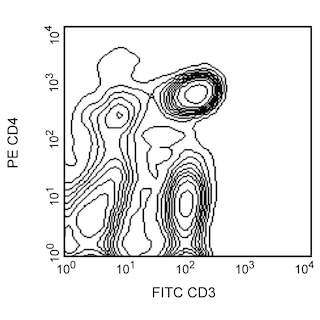-
抗体試薬
- フローサイトメトリー用試薬
-
ウェスタンブロッティング抗体試薬
- イムノアッセイ試薬
-
シングルセル試薬
- BD® AbSeq Assay | シングルセル試薬
- BD Rhapsody™ Accessory Kits | シングルセル試薬
- BD® Single-Cell Multiplexing Kit | シングルセル試薬
- BD Rhapsody™ Targeted mRNA Kits | シングルセル試薬
- BD Rhapsody™ Whole Transcriptome Analysis (WTA) Amplification Kit | シングルセル試薬
- BD Rhapsody™ TCR/BCR Profiling Assays (VDJ Assays) | シングルセル試薬
- BD® OMICS-Guard Sample Preservation Buffer
-
細胞機能評価のための試薬
-
顕微鏡・イメージング用試薬
-
細胞調製・分離試薬
-
- BD® AbSeq Assay | シングルセル試薬
- BD Rhapsody™ Accessory Kits | シングルセル試薬
- BD® Single-Cell Multiplexing Kit | シングルセル試薬
- BD Rhapsody™ Targeted mRNA Kits | シングルセル試薬
- BD Rhapsody™ Whole Transcriptome Analysis (WTA) Amplification Kit | シングルセル試薬
- BD Rhapsody™ TCR/BCR Profiling Assays (VDJ Assays) | シングルセル試薬
- BD® OMICS-Guard Sample Preservation Buffer
- Japan (Japanese)
-
Change country/language
Old Browser
Looks like you're visiting us from {countryName}.
Would you like to stay on the current country site or be switched to your country?




Flow cytometric analysis of the expression of CD3e on spleen and thymus. LOU splenocytes were simultaneously stained with PE Mouse Anti-Rat CD4 (Cat. No. 554838; left panels), PE Mouse Anti-Rat CD8a (Cat. No. 559976/554857; left panels) and Purified Mouse Anti-Rat CD3 (Cat. No. 554830/550295/559974; bottom left panel) monoclonal antibodies, followed by FITC Rat Anti-Mouse IgG3 (Cat. No. 553403, left panels). Please note that Cd3- CD4+ monocytes and CD3- CD8a+ NK cells may be found in the rat spleen. LOU thymocytes were stained with Purified Mouse Anti-Rat CD3 (bottom right panel), followed by FITC Goat Anti-Mouse Ig (Cat. No. 554001, right panels). The fluorescence contour plots/histograms were derived from gated events based on the light-scattering characteristics of viable cells. .Flow cytometry was performed on a BD FACScan™.


BD Pharmingen™ Purified Mouse Anti-Rat CD3

Regulatory Statusの凡例
Any use of products other than the permitted use without the express written authorization of Becton, Dickinson and Company is strictly prohibited.
Preparation and Storage
推奨アッセイ手順
For IHC, we recommend the use of Purified Mouse Anti-Rat CD3 (Cat. No. 550295) in our special formulation for immunohistochemistry .
Product Notices
- Since applications vary, each investigator should titrate the reagent to obtain optimal results.
- An isotype control should be used at the same concentration as the antibody of interest.
- Caution: Sodium azide yields highly toxic hydrazoic acid under acidic conditions. Dilute azide compounds in running water before discarding to avoid accumulation of potentially explosive deposits in plumbing.
- Sodium azide is a reversible inhibitor of oxidative metabolism; therefore, antibody preparations containing this preservative agent must not be used in cell cultures nor injected into animals. Sodium azide may be removed by washing stained cells or plate-bound antibody or dialyzing soluble antibody in sodium azide-free buffer. Since endotoxin may also affect the results of functional studies, we recommend the NA/LE (No Azide/Low Endotoxin) antibody format, if available, for in vitro and in vivo use.
- Please refer to www.bdbiosciences.com/us/s/resources for technical protocols.
関連製品






The G4.18 monoclonal antibody specifically recognizes the T-cell receptor-associated CD3 cell-surface antigen found on thymocytes, peripheral T lymphocytes, and dendritic epidermal T cells. It has been reported that CD3 expression is down-regulated within 24 hours in concanavalin A-stimulated rat T cells, and soluble mAb inhibits the allogeneic mixed-lymphocyte proliferative response and cell-mediated cytotoxicity to allogeneic target cells. In vivo treatment with G4.18 mAb prevents cardiac and skin allograft rejection, resulting in donor-specific tolerance. Pre-incubation of splenocytes with the alternate anti-rat CD3 monoclonal antibody, 1F4, blocks staining with mAb G4.18.
Development References (7)
-
Brenan M, Rees DJ. Sequence analysis of rat integrin alpha E1 and alpha E2 subunits: tissue expression reveals phenotypic similarities between intraepithelial lymphocytes and dendritic cells in lymph. Eur J Immunol. 1997; 27(11):3070-3079. (Clone-specific: Immunofluorescence, Western blot). View Reference
-
Morris DL, Komocsar WJ. Immunophenotyping analysis of peripheral blood, splenic, and thymic lymphocytes in male and female rats. J Pharmacol Toxicol Methods. 1997; 37(1):37-46. (Clone-specific). View Reference
-
Naper C, Vaage JT, Lambracht D, et al. Alloreactive natural killer cells in the rat: complex genetics of major histocompatibility complex control. Eur J Immunol. 1995; 25(5):1249-1256. (Clone-specific: Cytotoxicity). View Reference
-
Nelson DJ, McMenamin C, McWilliam AS, Brenan M, Holt PG. Development of the airway intraepithelial dendritic cell network in the rat from class II major histocompatibility (Ia)-negative precursors: differential regulation of Ia expression at different levels of the respiratory tract. J Exp Med. 1994; 179(1):203-212. (Clone-specific: Immunohistochemistry). View Reference
-
Nicolls MR, Aversa GG, Pearce NW, et al. Induction of long-term specific tolerance to allografts in rats by therapy with an anti-CD3-like monoclonal antibody.. Transplantation. 1993; 55(3):459-68. (Immunogen: (Co)-stimulation, Flow cytometry, Immunohistochemistry, Immunoprecipitation, Inhibition, Stimulation). View Reference
-
Strickland D, Kees UR, Holt PG. Regulation of T-cell activation in the lung: alveolar macrophages induce reversible T-cell anergy in vitro associated with inhibition of interleukin-2 receptor signal transduction. Immunology. 1996; 87(2):250-258. (Biology). View Reference
-
Upham JW, Strickland DH, Bilyk N, Robinson BW, Holt PG. Alveolar macrophages from humans and rodents selectively inhibit T-cell proliferation but permit T-cell activation and cytokine secretion. Immunology. 1995; 84(1):142-147. (Biology). View Reference
Please refer to Support Documents for Quality Certificates
Global - Refer to manufacturer's instructions for use and related User Manuals and Technical data sheets before using this products as described
Comparisons, where applicable, are made against older BD Technology, manual methods or are general performance claims. Comparisons are not made against non-BD technologies, unless otherwise noted.
For Research Use Only. Not for use in diagnostic or therapeutic procedures.
Report a Site Issue
This form is intended to help us improve our website experience. For other support, please visit our Contact Us page.